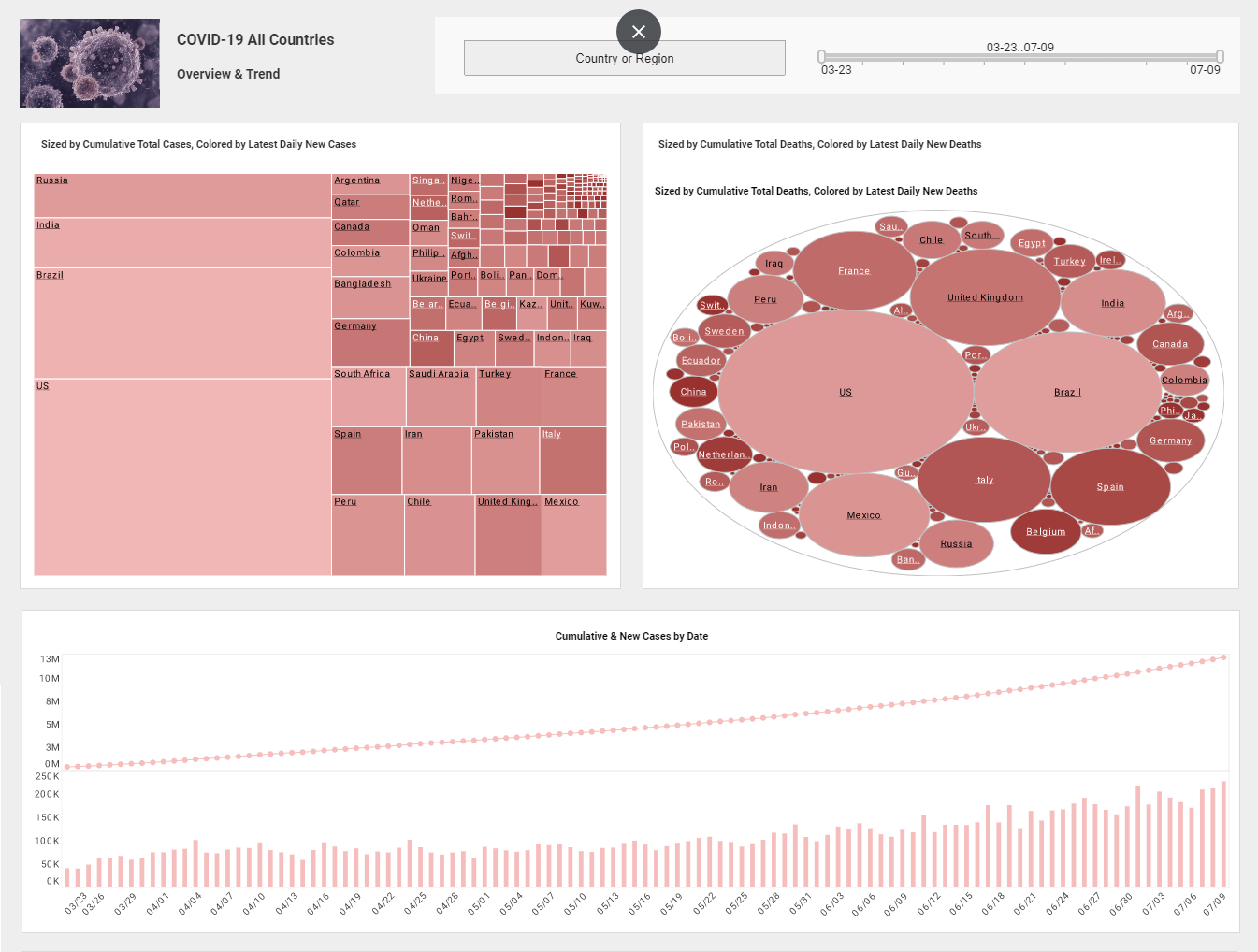InetSoft's CEO Discusses the Benefits of Enterprise Mashups
A continuation of The Business Intelligence Network's exclusive interview with InetSoft’s Luke Liang
Ron Powell (Editorial Director of the Business Intelligence Network): You know, some of our audience may not be familiar with the term enterprise mashup. It’s a Web 2.0 term?
Luke Liang (CEO, InetSoft Technology): Yes, we have been called the first company to try this concept in the business intelligence market, or in the data management field, which was a little surprising to learn. That was recently at a business intelligence conference we participated in.
To define enterprise mashup is not very hard. Mashup typically means you are combining a couple of things together that were not really designed to be used together. One of the most famous examples is the mashup of the Google map with something else. Somebody plotted city crime rates on a Google map. Those two things, before had no connection at all, but someone just put it together.
An enterprise mashup is when two or more data sources are combined that were not originally modeled in an enterprise BI system or information management system. So our mashup is pretty much the same concept here, only we enable maximum self-service, meaning the average business end user can do a mashup with a simple drag and drop interface.
| #1 Ranking: Read how InetSoft was rated #1 for user adoption in G2's user survey-based index | Read More |
Powell: OK, so you are taking multiple data sources and combining them in such a way that they deliver a new context based on both or multiple sets of data?
Liang: Exactly.
Powell: OK, very good. Very good.
Liang: This is actually what a lot of business people have been doing in spreadsheets on their own. You keep hearing about the spread mart, and how the spreadsheet can never go away. A lot of what we have learned happening is people are doing mashups, basically, inside the spreadsheet. Actually, we now provide a way for IT to embrace those spreadsheets in an official way. An end user can importing that spreadsheet that they may have been maintaining on the side into our BI application. Now, it becomes shareable across the enterprise in the BI platform.
Powell: Right. Exactly. I know it well. That is one of the biggest problem areas for most of our viewers at the Business Intelligence Network. Think about the “spreadsheet hell,” that’s the term they use. It has been very difficult, but a lot of the new BI products like yours that are coming to market are helping to alleviate some of the problems that are associated with that.
Liang: One more area that we are paying attention that might be of interest to your audience has to do with collaboration. Recently Web 2.0 has brought a lot of new collaboration tools and practices into popularity, such as wikis and blogs, which have increasingly been used in the enterprise. Previously it had been a consumer kind of phenomenon. We have heard our customers say, “you know what? A lot of collaboration is going on, and we want to be able to mash up our enterprise data in a collaborative away, also."
So we are researching in that field, and we are probably going to see something in the next twelve months where those Web 2.0 collaboration technologies interplay with BI technologies. I feel that is pretty interesting.
Powell: The typical customer for InetSoft, are we looking at large enterprises, or are we looking at mid-tier companies, or smaller organizations? What is your typical BI customer?
Liang: We typically have two types of customers. The first type is the enterprise customer. They tend to be larger organizations, but they don’t necessarily have to be a Fortune 500 company, even though our customer base has 25% of the Fortune 500 companies in it. We have IBM, GE, Goldman Sachs; our customer base goes across all industries.
But typically those customers would have strong data needs. They typically have a fairly experienced team that can handle BI tools and work with data models. So that is the enterprise customer.
On the other hand we have OEM partners. Those are the people who build our business intelligence software into their software. Their software will typically be vertically oriented or address a particular business application. In this group, it also very diverse. They can be small software companies or startups, and they need a strong BI platform to support them. It can also be a very large organization such as GE Healthcare with whom we are going into some very large healthcare organizations. Their installations typically take months and costs millions of dollars, and we’re a part of that BI solution.
Our BI product line is very flexible which can serve anywhere from small and medium-sized company all the way to multinationals.
Powell: Very good. Well, Luke it has been a pleasure having you as my guest today.
Liang: Thanks for having us, today.
 |
Learn about the top 10 features of embedded business intelligence. |
Powell: For those of you who are interested in improving your own operational business intelligence efforts, please take a look at InetSoft Technology. That’s it for this edition of BeyeNetwork’s Spotlight. I am Ron Powell. Good bye, and good business.
Previous: Visualization Software Resources



